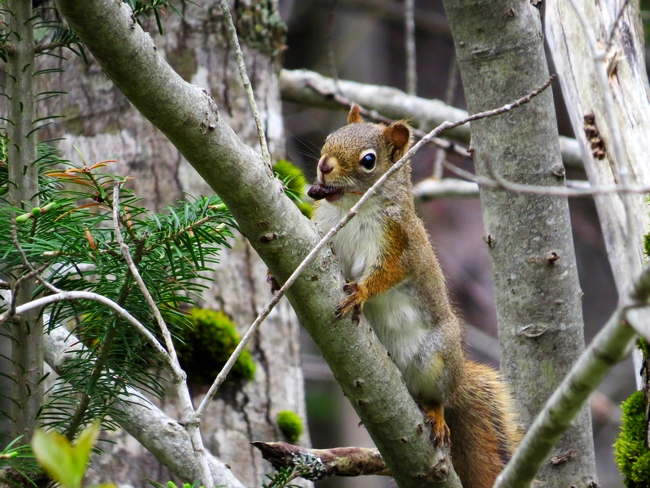Hunting Small Game
We’re going to talk about hunting small game this week. We asked followers on Facebook what they’d like to read and/or learn about a while back and hunting small game was one of the suggested topics. Hunting was a given decades ago. If homesteaders wanted meat on the table they hunted because they didn’t have livestock to move with them when they settled on their land.
Hunting small game can provide meat on the table and it’s a means of keeping the pest population in check. Pests can do a lot of damage to a garden. Eliminating a pest, minimizing damage and providing meat is a win-win-win situation. Have you ever considered woodchuck stew? It’s been said that they taste best when they’ve been eating your best vegetable plants.
[subscribe2]

Red squirrel
Small game is generally considered to be small mammals and birds such as:
- Squirrel
- Hare
- Rabbit
- Woodchuck
- Prairie dog
- Grouse (partridge)
- Chukar
- Quail
- Pheasant
- Woodcock
- Dove
Laws vary between states. It’s important to become familiar with your state’s laws to keep yourself out of trouble, keep yourself and others safe, and for the benefit of the animals you’re hunting.
What weapons are you allowed to use? Most hunters use firearms for small mammals. A .22 caliber rifle is large enough to do the job. It’s a small, light weight rifle with little “kick” and fairly quiet. It’s suitable for everyone learning to hunt and young hunters. A .177 air rifle might do the job for small squirrels though it can be tricky. You absolutely must hit your target precisely otherwise you’ll only hurt the animal. Winter is hard time to use a small rifle like the .177. Even when the air pressure is high, the pellet might hit a non-lethal area of the body, bounce off and roll away.
There are exceptions but birds are hunted with shotguns as a general rule. The smallest shotgun we use for bird hunting is the .410. It has a short range and is useful for small birds like dove, partridge and woodcock. It’s a great starter shotgun but will probably be outgrown quickly.
Next up is the .20 gauge shotgun for small birds. For partridge and larger birds we use .12 and .10 gauge. Large birds such as turkey and goose require heavier loads and longer shells to bring the birds down humanely.
You might choose a shotgun for small game. If I’m partridge hunting with a .20 or .12 gauge and happen to have a good shot at a snowshoe hare I’ll take the shot. I wouldn’t hesitate to shoot a squirrel with a .410 as long as I weren’t too close to the squirrel. Place your shots well.
Tip Read boxes just like you read a food label for ingredients. The box should tell you the gauge, length, FPS (feet per second, or how fast the shot travels), oz (ounce) shot, and shot on shotgun shell boxes.
Tip Bullet boxes for rifles are labeled similarly. Many manufacturers clearly label their boxes with the game the bullet is suited to. Study up. Start with .22 for hunting small game.
